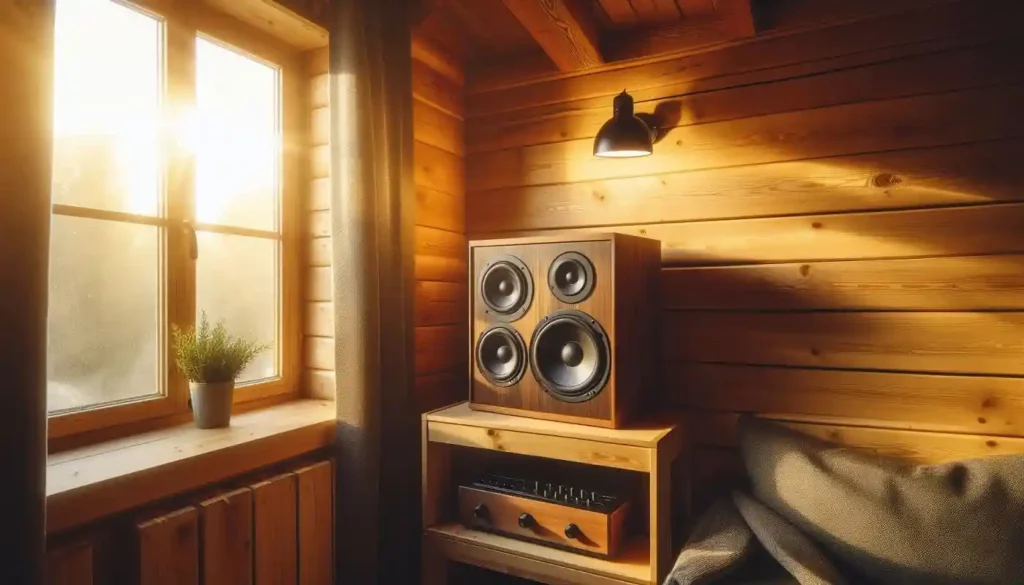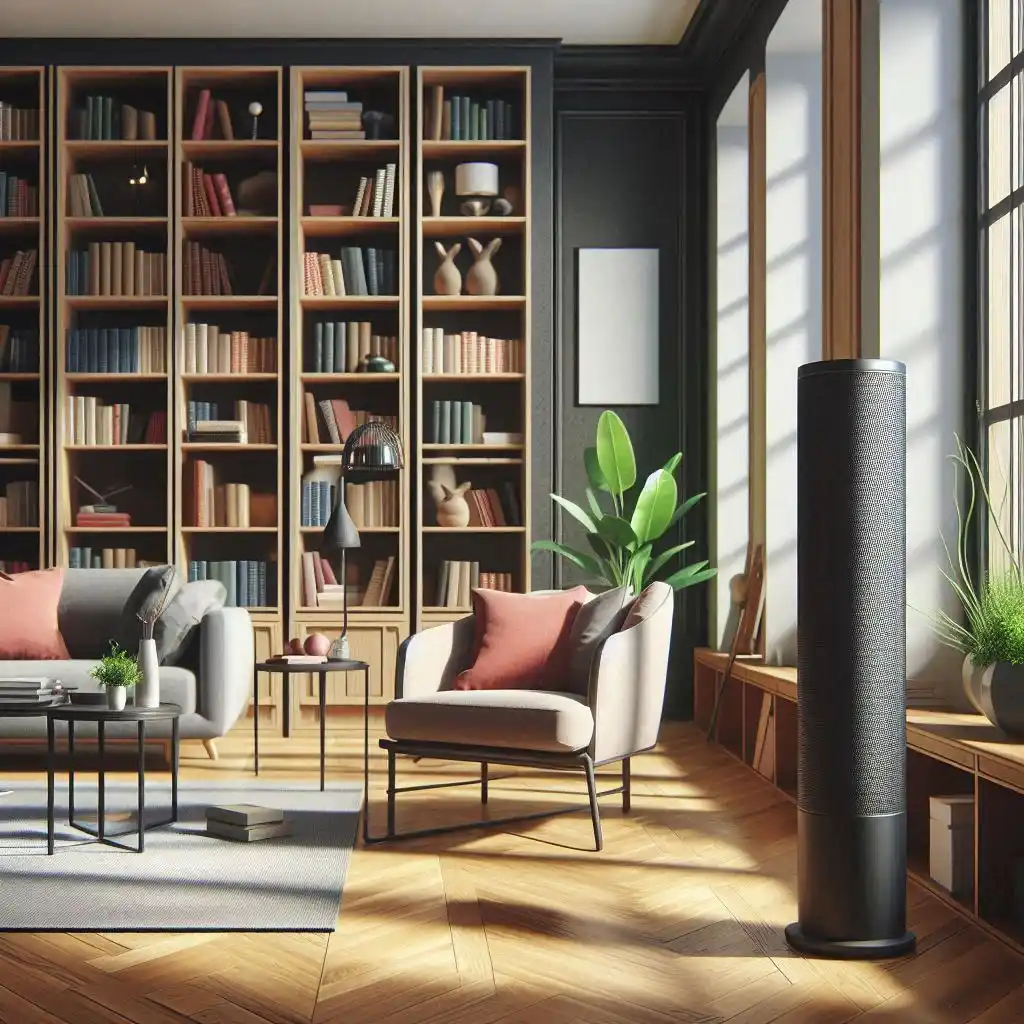Mastering 2 Channel Speaker Placement: Elevate Your Audio Experience
As an AV professional, you understand the importance of creating immersive audio experiences for your clients. Regarding 2 channel audio systems, proper speaker placement is crucial for achieving optimal sound quality and delivering a truly engaging listening experience.
Whether you are setting up a dedicated home theater or designing a high-end audio system for a commercial space, mastering the art of 2 channel speaker placement is an essential skill.
As you navigate the world of 2 channel audio, it’s important to stay up-to-date with the latest AV technologies and best practices. Tools like XTEN-AV can streamline your workflow and help you design high-performance audio systems more efficiently.
Let’s understand the fundamentals of 2 channel speaker placement. We’ll also explore its relevance in modern audio setups. Finally, we will provide practical tips for optimal sound quality.
The all-in-one solution for your AV needs
Transform your audio-visual experience with XTEN-AV.
No Credit Card required
Key Takeaways
- Know the factors that influence speaker placement, including room size, speaker type, listening distance, and furniture arrangement.
- Use XTEN-AV tools, such as the Ceiling Speaker Layout Calculator and X-DRAW software, to help achieve the best speaker placement and overall audio experience.
- Understand that proper speaker placement is vital for optimal sound quality in a 2 channel audio system.
What are Two Channel Audio Systems?
A 2 channel speaker system, also known as a two channel audio system, is a popular setup for home audio enthusiasts. This configuration typically consists of two speakers—one for the left channel and one for the right – designed to recreate a stereo sound experience. Whether you are listening to music or watching movies, a good stereo system can significantly enhance your audio experience.
Benefits of 2 channel speaker system for your home theater setup
Investing in a 2 channel home theater or audio system offers several advantages:
- Enhanced Sound Quality: Two channel audio systems provide a richer, more immersive sound experience compared to single-speaker setups. Stereo separation creates a more accurate representation of the original recording. It feels as though the musicians are performing live in your space.
- Simplicity and Focus: A two channel system is often simpler to set up and manage than multi-channel systems. This simplicity allows for a more concentrated investment in quality components, leading to better overall audio performance.
- Versatility: These systems can accommodate various audio sources, including vinyl records, CDs, and digital streaming. This versatility allows you to enjoy a wide range of music formats without compromising sound quality.
- Space Efficiency: A 2 channel setup typically requires less space than a full surround sound system stereo, making it suitable for smaller rooms or apartments where space is at a premium.
How to Choose the Right Speakers for your 2 Channel Speaker Setup?
Bookshelf vs. Tower Speakers
When deciding between bookshelf and tower speakers, consider your room size, budget, and sound needs.
- Bookshelf Speakers: These compact speakers are ideal for smaller rooms or setups where space is limited. They can be placed on stands or shelves, allowing for flexibility in two channel speaker placement. Bookshelf speakers are often budget-friendly. This makes them a good choice for a quality stereo system without overspending. While they might not produce the same level of bass as larger models, they can still deliver clear and detailed audio, especially when paired with a subwoofer to handle low frequencies.
- Tower Speakers: Also known as floorstanding speakers, these larger models typically deliver more bass and can fill larger rooms with sound. They often feature many drivers for a fuller audio experience. However, they need more space and may not be suitable for smaller rooms. If you have the room and the budget, tower speakers can provide a powerful audio experience.
Wired vs. Wireless Systems
When it comes to powering your speakers, you have options for both wired and wireless systems.
- Wired Systems: A traditional approach involves using an AV receiver to connect your speakers. This setup typically provides reliable sound quality and allows for easy integration with other audio components. Stereo wired speakers often deliver superior sound fidelity compared to their wireless counterparts.
- Wireless Systems: Bluetooth stereo with speakers offers convenience and flexibility. It allows you to place speakers anywhere without worrying about cable management. However, wireless systems may sometimes compromise on sound quality due to compression and signal interference.
What are the Key Principles of 2 Channel Speaker Placement?
When setting up a 2 channel audio system, proper speaker placement is essential for achieving the best sound quality. Here are some key principles to guide you in creating an optimal listening environment.
Equilateral Triangle Setup
One of the most effective methods for 2 channel speaker placement is the equilateral triangle setup. This involves positioning your speakers and listening position to form an equilateral triangle.
- Ideal Placement: Place the two speakers at equal distances from each other and from your listening position. For example, if your speakers are 6 feet apart, you should sit 6 feet away from them.
- Listening Angle: Ideally, each speaker should be angled at 60 degrees from your listening position. This creates a balanced stereo image. It lets you accurately perceive sound from both channels.
Stereo Speaker Separation
The distance between your speakers significantly impacts audio quality and stereo imaging.
- Bookshelf Speakers: For bookshelf speakers, a separation of about 4 feet is generally recommended. This distance prevents sound blending. It ensures each channel maintains its distinct audio characteristics.
- Floorstanding Speakers: If you are using floorstanding speakers, aim for a separation of about 8 feet. This wider spacing enhances the stereo field, allowing for a more immersive listening experience.
- Importance of Separation: Adequate speaker separation prevents gaps in stereo imaging. Sounds are then clearly defined and positioned within the soundstage.
Speaker Height
The height at which you position your speakers is crucial for optimal listening.
Tweeter Positioning: Position the tweeters (the high-frequency drivers) at ear level when you are seated. This alignment is vital because high frequencies are more directional. Having them aimed at your ears enhances clarity and detail in the audio.
Factors Influencing 2 Channel Speaker Placement
To maximize the performance of your 2 channel speaker placement is crucial. Here are some key factors to consider:
Room Size and Shape
The dimensions and shape of your home theater play a vital role in how sound waves interact with the environment. Larger rooms may require more powerful speakers or additional adjustments to ensure sound reaches the listener effectively. Additionally, irregularly shaped rooms can create sound reflections that may distort audio quality. Ideally, you want a rectangular room with minimal hard surfaces to reduce echo and enhance clarity.
Speaker Type and Size
Different speakers have unique placement needs. Floor standing speakers need distance from walls to avoid bass buildup. Bookshelf speakers can go on stands or shelves at ear level. Speaker size also matters; larger ones need more space.
Listening Distance
The distance between your listening position and the speakers is critical for achieving optimal sound. You should sit equidistantly between both speakers to create a balanced audio image. Additionally, consider the toe-in angle. Angling your speakers towards the listener can improve stereo imaging and soundstage depth.
Furniture and Obstacles
Furniture and other objects in the room can obstruct sound waves, affecting the overall audio experience. Avoid placing speakers too close to walls or behind large furniture pieces. Rearranging furniture can improve sound dispersion. Acoustic treatments can also enhance clarity. Utilizing AV tools like XTEN-AV’s design software, X-DRAW, can help visualize the layout of your room, allowing you to plan for optimal speaker placement and avoid obstructions that could hinder sound quality.
Practical Tips for Setting Up Your Two Channel Audio System
Setting up a two channel audio system effectively can greatly enhance your listening experience. Here are some practical tips to optimize your 2 channel speaker placement and ensure you achieve a good stereo system.
Experimentation with 2 channel speaker placement
Finding the best sound involves a bit of experimentation and finding the best 2 channel speaker placement. Begin by positioning your speakers as recommended. Don’t hesitate to move them around. Play your favorite music or movie scenes. Adjust speaker locations until you find the best sound quality.
Start by positioning your speakers as recommended. Usually, this forms an equilateral triangle with where you will be listening. This setup allows for balanced sound distribution and optimal stereo imaging.
For instance, to simplify the process, consider using the XTEN-AV Ceiling Speaker Layout Calculator. This calculator simplifies your ceiling speaker layouts, determining the ideal number of speakers for your space. Input your room dimensions and the speaker brand you are considering.
Using Speaker Stands or Spikes
If you are using bookshelf speakers, invest in sturdy speaker stands. These elevate the speakers to ear level, ensuring that the tweeters direct sound toward your ears, which enhances clarity.
To assist you in achieving the best speaker placement, consider using tools from XTEN-AV. Their innovative free AV schematic diagram software, including features like X-DRAW, allows you to create detailed diagrams of your audio setup. With X-DRAW, you can visualize how your speakers will be positioned in your room’s layout. This helps you ensure that your stands are placed correctly and that your speakers are at the right height.
Avoiding Obstructions
Clear pathways for sound are crucial for maintaining audio integrity.
- Remove Obstacles: Ensure that there are no obstructions, such as furniture or decorative items, directly in front of your speakers. Even curtains can dampen sound quality if they are too close to the speakers.
- Symmetrical Setup: Aim for a symmetrical arrangement in your room. Place your speakers equidistant from walls and obstacles. This creates a balanced soundstage. It also enhances the overall listening experience.
For instance, with innovative diagramming skills, AV diagram software like X-DRAW simplifies complex design into elaborative and easy-to-understand diagrams. This provides great visualization for your AV diagrams. You can see your schematic diagrams, signal flow, and cable diagrams. This helps you plan and execute a balanced setup easily.
Common Mistakes in Two Channel Speaker Placement
When setting up your two channel audio system, avoiding common mistakes in two channel speaker placement is crucial for achieving top-notch audio quality.
Overview of Frequent Errors
One of the most frequent errors is inadequate speaker placement. Placing speakers too close to walls can cause unwanted reflections and distortions, negatively impacting sound quality. Failing to maintain adequate spacing between the speakers can lead to sound localization issues. This makes it difficult to discern audio details.
- Listener Fatigue: Improper placement can also result in listener fatigue. If the sound is harsh or unbalanced, it can become tiring to listen for extended periods. This is especially true in a 2 channel home theater setup, where clarity and immersion are paramount. To know more about how you can setup the perfect home theater speaker placement, check out our blog here.
Room Considerations for Optimal Sound
The shape and size of your room significantly affect speaker placement.
- Room Shape: Irregularly shaped rooms can create sound reflections that distort audio quality. Ideally, a rectangular room with minimal hard surfaces will help reduce echo and enhance clarity.
- Furniture Arrangement: The arrangement of furniture can obstruct sound waves, affecting the audio experience. Avoid placing speakers behind large furniture pieces. Also, consider how your seating position relates to the speakers for optimal sound.
Advanced Techniques for Fine-Tuning Your Setup
Measurement tools and software should be utilized to analyze sound performance to achieve the best sound quality.
- Measurement Tools: Use tools like sound level meters or smartphone apps to measure sound levels at your listening position. This can help you identify imbalances in audio output.
- Adjusting Based on Preferences: Fine-tune your speaker placement based on personal listening preferences and room dynamics. You might discover that angling your speakers inward improves stereo imaging. This creates a more immersive experience for the listener.
How Can You Optimize Your 2-Channel Speaker Placement with XTEN-AV?
As an AV professional, optimizing your 2-channel speaker placement is crucial for delivering an immersive audio experience. XTEN-AV offers powerful tools to help you visualize and fine-tune your setup for maximum performance.
Virtual Reality For Your Room
XTEN-AV’s X-VRSE VR environment lets you realize your room designs and adjust them to facilitate realistic spaces. By trialing the virtual space using a headset or the desktop version, it is possible to ascertain the placement of the speakers and other equipment.
Automating Your Drawing and graphical representation
Following placement of your speakers in virtual reality, XTEN-AV creates AV documents such as line schematics and signal flow diagrams for your 2 channel speaker setup in under a minute. The final av designs are accurate and of high professional standards.
Library of Products
With more than 5,200 brands and over 5 million products, XTEN-AV has a rich range of speakers and AV equipment. With this database, you will be able to define what components you need for the 2-channel system and how you can integrate them smoothly into the project.
AV Design Mastery + Winning Proposals = 10x Productivity!
- Automatic Cable Labeling & Styling
- 100+ Free Proposal Templates
- Upload & Create Floor Plans
- 1.5M Products from 5200 Brands
- AI-powered ‘Search Sense'
- Legally Binding Digital Signatures
No Credit Card Required
Conclusion
Proper 2 channel home speaker placement is crucial for achieving an exceptional audio experience. Don’t hesitate to adjust your setup based on your preferences. Try different angles and distances from walls to discover what sounds best in your space. Small changes can lead to significant improvements in sound quality.
To further enhance your experience, take advantage of XTEN-AV’s 15-day free trial. This allows you to test their systems in your home without any commitment. Additionally, you can book a demo to see how their solutions can elevate your audio setup.
FAQs
The rule of thumb for speaker placement in a 2 channel setup is to create an equilateral triangle with the listening position. This means the speakers should be equidistant from each other and the listener, ideally forming a 60-degree angle at the listening sweet spot. This arrangement ensures a balanced stereo image and a wide, immersive soundstage.
A 2 channel speaker system is the most fundamental and widespread audio setup, utilizing two speakers—typically a left and a right channel—to deliver stereo sound. It’s a popular choice for music enthusiasts and forms the core of many home theater systems, providing a clear separation between left and right audio channels for an engaging listening experience.
You can obtain 2 channel audio directly from sources that are natively stereo, such as music CDs, vinyl records, or streaming services offering stereo playback. Alternatively, if you have a surround sound setup (like 5.1 or 7.1), most audio/video receivers or processors allow you to downmix the multi-channel audio to 2 channels, effectively converting it to stereo for playback on your 2 channel audio system.
A 2 channel audio system is versatile and accommodates a range of speaker types. Bookshelf speakers are compact and popular for smaller spaces while floor-standing speakers offer greater power and bass response. You can also opt for in-wall or on-wall speakers for a discreet setup. The ideal choice ultimately depends on your room size, listening preferences, and budget.



